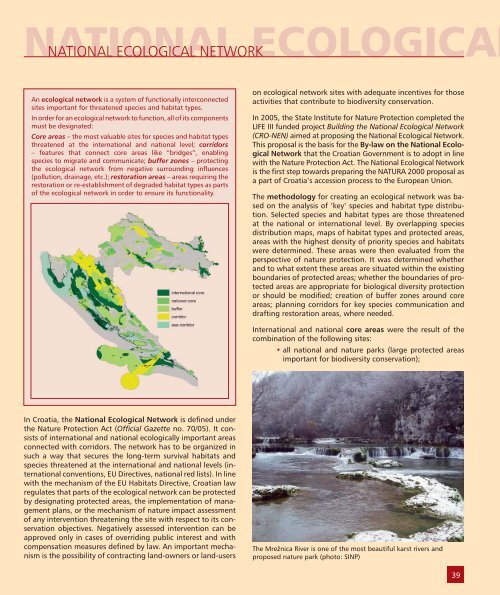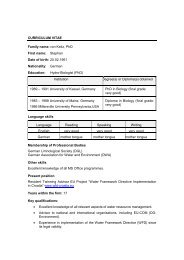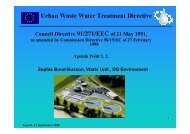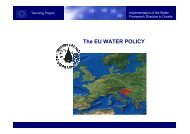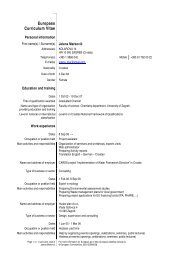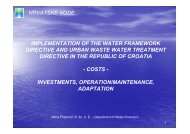BIODIVERSITY OF CROATIA
BIODIVERSITY OF CROATIA
BIODIVERSITY OF CROATIA
Create successful ePaper yourself
Turn your PDF publications into a flip-book with our unique Google optimized e-Paper software.
ECOLOGICAL<br />
NATIONAL ECOLOGICAL NETWORK<br />
An ecological network is a system of functionally interconnected<br />
sites important for threatened species and habitat types.<br />
In order for an ecological network to function, all of its components<br />
must be designated:<br />
Core areas – the most valuable sites for species and habitat types<br />
threatened at the international and national level; corridors<br />
– features that connect core areas like “bridges”, enabling<br />
species to migrate and communicate; buffer zones – protecting<br />
the ecological network from negative surrounding influences<br />
(pollution, drainage, etc.); restoration areas – areas requiring the<br />
restoration or re-establishment of degraded habitat types as parts<br />
of the ecological network in order to ensure its functionality.<br />
on ecological network sites with adequate incentives for those<br />
activities that contribute to biodiversity conservation.<br />
In 2005, the State Institute for Nature Protection completed the<br />
LIFE III funded project Building the National Ecological Network<br />
(CRO-NEN) aimed at proposing the National Ecological Network.<br />
This proposal is the basis for the By-law on the National Ecological<br />
Network that the Croatian Government is to adopt in line<br />
with the Nature Protection Act. The National Ecological Network<br />
is the first step towards preparing the NATURA 2000 proposal as<br />
a part of Croatia’s accession process to the European Union.<br />
The methodology for creating an ecological network was based<br />
on the analysis of ’key’ species and habitat type distribution.<br />
Selected species and habitat types are those threatened<br />
at the national or international level. By overlapping species<br />
distribution maps, maps of habitat types and protected areas,<br />
areas with the highest density of priority species and habitats<br />
were determined. These areas were then evaluated from the<br />
perspective of nature protection. It was determined whether<br />
and to what extent these areas are situated within the existing<br />
boundaries of protected areas; whether the boundaries of protected<br />
areas are appropriate for biological diversity protection<br />
or should be modified; creation of buffer zones around core<br />
areas; planning corridors for key species communication and<br />
drafting restoration areas, where needed.<br />
International and national core areas were the result of the<br />
combination of the following sites:<br />
• all national and nature parks (large protected areas<br />
important for biodiversity conservation);<br />
In Croatia, the National Ecological Network is defined under<br />
the Nature Protection Act (Official Gazette no. 70/05). It consists<br />
of international and national ecologically important areas<br />
connected with corridors. The network has to be organized in<br />
such a way that secures the long-term survival habitats and<br />
species threatened at the international and national levels (international<br />
conventions, EU Directives, national red lists). In line<br />
with the mechanism of the EU Habitats Directive, Croatian law<br />
regulates that parts of the ecological network can be protected<br />
by designating protected areas, the implementation of management<br />
plans, or the mechanism of nature impact assessment<br />
of any intervention threatening the site with respect to its conservation<br />
objectives. Negatively assessed intervention can be<br />
approved only in cases of overriding public interest and with<br />
compensation measures defined by law. An important mechanism<br />
is the possibility of contracting land-owners or land-users<br />
The Mre`nica River is one of the most beautiful karst rivers and<br />
proposed nature park (photo: SINP)<br />
39


